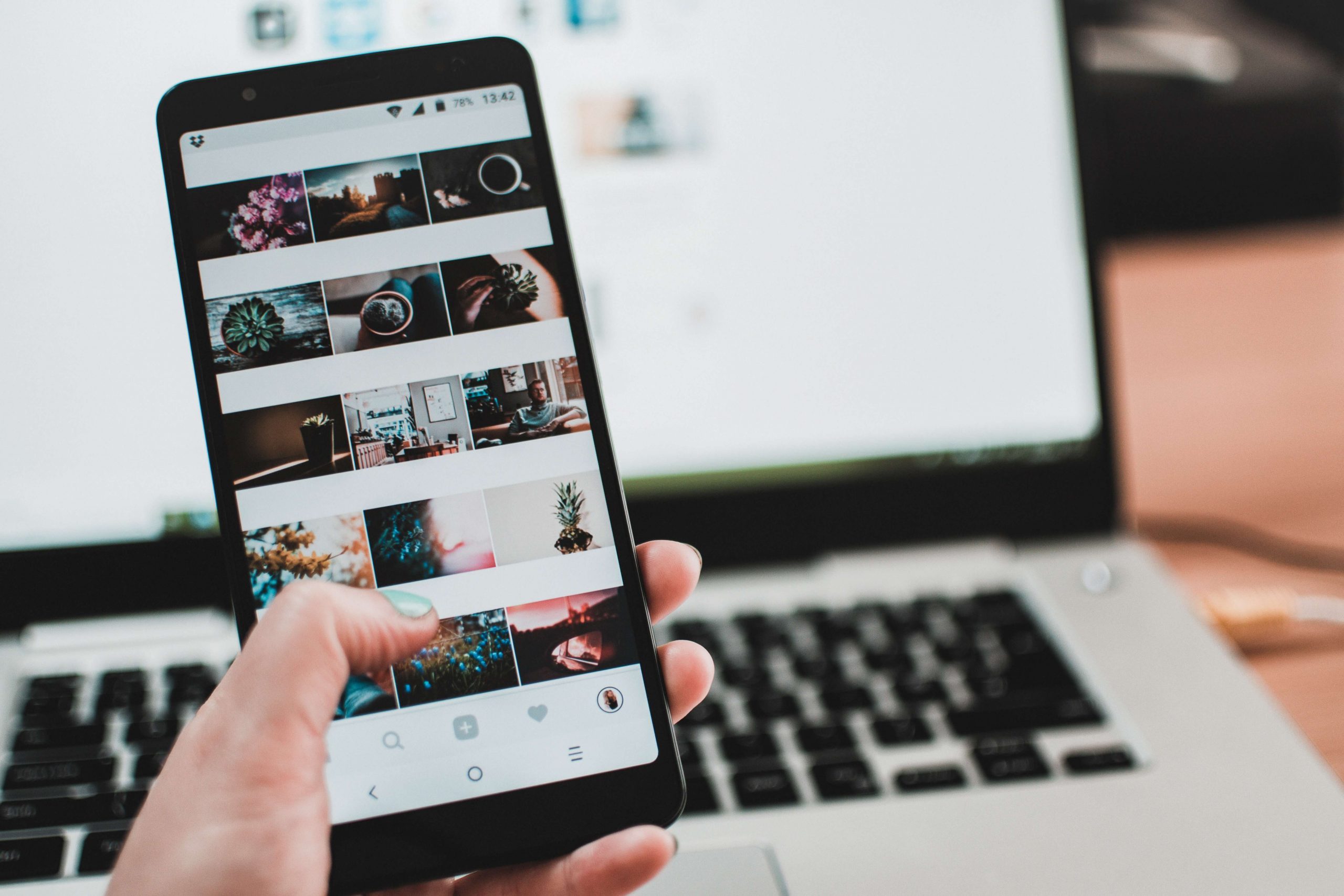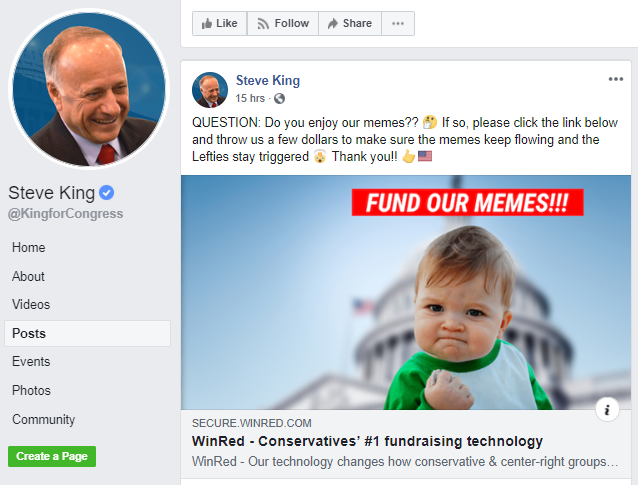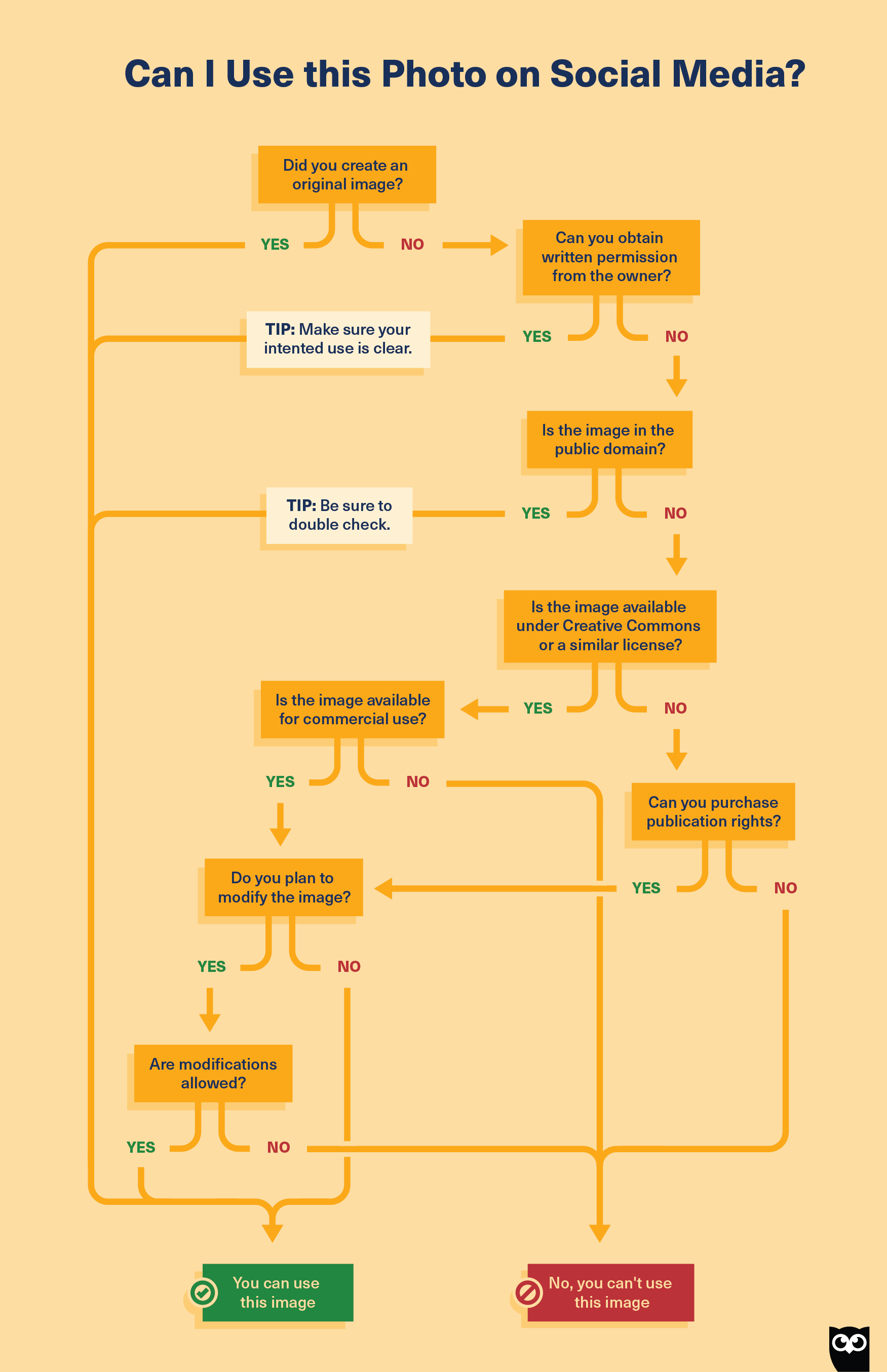It’s well-known that photos click on social media. And so they’re also what we click on. Normally, posts with visuals get more views, likes, and shares than posts that don’t.
However, sourcing photos for social media isn’t straightforward all the time. The legalese found in image copyright policies can be intimidating. From Attribution-Noncommercial-No Derivative Works licenses to “fair use,” there’s lots to unpack.
There’s a lot at stake, too. Breaches of copyright can land your business in court with hefty fines, and “I didn’t know better” won’t fly as a valid defense. Especially when you use photos on social media advertising and marketing. Just ask the mother of Success Kid.
However, once you know the rules it’s simple to observe them. Plus there are some stock photo websites out there that make discovering images for social media stress-free.
We reply to all of your photo copyright questions and offer the best sources below.
What’s picture copyright?
Put simply, photo copyright is photo possession. It’s a type of authorized protection that’s automatically given to a creator as quickly as a picture is snapped, saved, or drawn. Images, digital art, maps, charts, and paintings are all fair game.
Legal guidelines about picture copyright vary by nation. Fortuitously, 177 nations—including Canada and the USA—are members of the Berne Convention treaty, which units fundamental copyright requirements.
According to the treaty (and Canadian and U.S. copyright laws), a copyright proprietor has unique rights to:
- Reproduce the work
- Make derivatives of the work
- Show the work publicly
- Distribute the work to the general public
Sounds easy, however, it may get complicated typically.
Right here’s an instance. Keep in mind the star-studded selfie snapped on Ellen DeGeneres’ cellphone throughout the 2014 Academy Awards? Technically, the proprietor of that photo’s copyright is Bradley Cooper. Why? Despite the fact that he used Degeneres’ cellphone, he took the picture.
That means, legally, Degeneres needed to ask Cooper for permission to post the photo. This instance is standard with intellectual property lawyers, who use it to point out that copyright possession isn’t all the time as apparent as it appears.
If it’s not your picture, find out who created it and ask for permission to use it.
Have more questions? Check out the World Intellectual Property Organization FAQs.
What’s fair use?
Fair use is an exception to the rule when it comes to copyright. It pertains to particular circumstances when copyright-protected works can be used without permission.
Common contexts for fair use include criticism, news reporting, teaching, or research. In these circumstances, the copyrighted work is usually used as reference materials, and in a method that’s “beneficial to society.”
Fair use rarely applies to social media advertising and marketing. In actual fact, Section 107 of the U.S. Copyright Act judges truthful use circumstances based mostly on these 4 elements:
- Is it for business, non-profit, or instructional use?
- Is the copyrighted work extremely inventive, or more fact-based?
- How much of the work is reproduced?
- How does the use affect the potential marketplace for the original work?
These have been the precise questions requested in the case of Graham v. Prince. In 2017, photographer Donald Graham sued Richard Prince, after he printed out screenshots of Graham’s and other Instagram posts onto canvases and displayed them in a gallery. Prince argued his appropriation artwork fell below “fair use” exemptions. However, the judge ruled to the contrary, noting the work “does not make any substantial aesthetic alterations,” and was made for commercial purposes.
It’s most unlikely when people use photos on social media advertising and marketing without copyright permission will meet truthful use standards. Remember, in case you take the risk, you might be held liable for breach of copyright.
What are Inventive Commons?
Inventive commons is a set of licenses that flip “all rights reserved” copyrights into “some rights reserved.” In different phrases, these licenses enable creators to present people’s permission to use their works. A number of websites benefit from these permissions, including Wikipedia, YouTube, TED, and Flickr.
“Some rights reserved” licenses do not give someone carte blanche to use the content which they want. There are several types of licenses that determine how photos can be used on social media:
- Attribution-Noncommercial-No Spinoff Works (CC BY-NC-ND): This license means somebody can use a work, however, they can’t modify it, they usually can’t make money via their use of it.
- Attribution-No Derivative Works (CC BY-ND): A work with this license can’t be modified, however, it may be used for commercial purposes.
- Attribution-Noncommercial (CC BY-NC): Works may be altered, however, they can’t be used commercially.
- Attribution (CC BY): Alterations and business use are okay.
- Attribution-Noncommercial-Share Alike (CC BY-NC-SA): Works may be altered—however with specified limitations. Not to be used in sales contexts.
- Attribution-Share Alike (CC BY-SA): Work might be altered inside limitations and used commercially.
- Public domain: If a creator has relinquished all rights, or the copyright has expired, the work enters the general public area. In Creative Commons, that is typically listed as CC0 1.0 Universal (CC0 1.0).
The most secure options—particularly should you intend to use photos on social media advertising and marketing—are attribution-only and CC0 1.0 Universal (CC0 1.0) public domain licenses. Remember, any license that features the phrase “attribution” signifies that you should give credit to the creator.
Nonetheless unsure which license to use? Try this license chooser.



